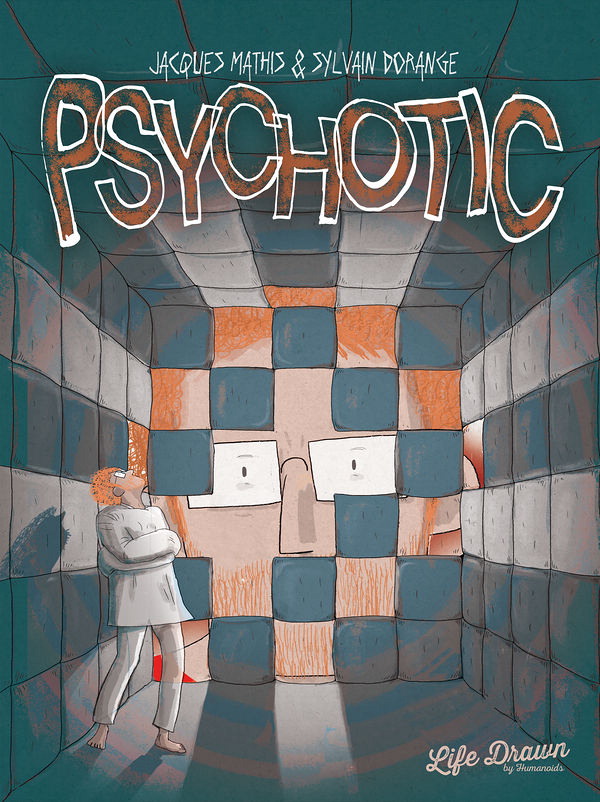Have you ever wondered what patients see when hallucinations manifest as shadows or recurring, imaginary guests? What about patients’ unfiltered internal thought processes?
In the graphic novel Psychotic, the author, Jacques Mathis, reveals his lifelong experiences with bipolar disorder. The spectacular full-page illustrations by Sylvain Dorange do more than just accompany the text; they carry the storytelling. Although each chapter can be read as a separate vignette, there are three threads that tie these vignettes together: present-day events as Mathis wanders around Europe trying to finish writing this novel, flashbacks to various moments of his journey with bipolar disorder, and notable people he encountered.
The book begins with 33-year-old Mathis waiting to be seen in his psychiatrist’s office. Glimmers of grandiosity shine through as he writes in his journal about his destiny as a Frenchman who would move to New York to make movies; he aspires to start his career as an actor, move into a director role, and then become a priest, the Pope, and eventually the president. After being called into his psychiatrist’s office, he is asked by the psychiatrist to describe a man that Mathis kept mentioning at his last appointment: Lee Marvin. Lee Marvin was at Coquelicots Hospital during Mathis’ hospitalization there. As Mathis talks about various events at the hospital, illustrations of creepy-crawlies, such as beige-gray snake shadows, white-outlined one-eyed tentacled monsters, and gray shadowy hands reaching out of the toilet, are subtly introduced, alluding to the reason he was hospitalized without ever saying so.
The storytelling is effective because the reader is invited to see what Mathis sees. His prose coupled with the visuals comes across as a candid and genuine portrayal of his lived experience. His masterful storytelling does not glorify, demonize, or make light of his experience with bipolar disorder; it just is. The nonlinear narrative style evokes the feeling of tangentiality, which is something that people with bipolar disorder may experience as part of their illness.
The visuals drive the emotional experience of reading Psychotic. Colors consistently reflect the mood in each vignette: blue is associated with melancholy or medication-induced dream states; red is associated with rigidity; and bright vivid colors are associated with particularly pressing, urgent psychotic episodes. Panel layouts are an integral part in setting the pace of the book—more panels provide room for narrative development, and fewer panels provide creative space. This structure narrows the attention of the reader to a particular experience or feeling. The variations between full-page or two-page illustrations and orderly six-panel illustrations add to the visual impact of the book, and the reader is moved from a feeling of chaos to a sense of calm and order or is invited into emptiness with the manipulation of blank space. These are feelings that are difficult to describe in words but are readily intuited in a visual medium.
Readers should not be deceived by the number of pages in the book. It’s a relatively short and fairly accessible read. I have been able to share Psychotic with patients and their families with good reception because it provides so much insight into bipolar disorder. Patients take comfort in knowing that someone else has gone through what they are experiencing, and their families have been able to understand better the abstract visuals that their loved ones have experienced.
Psychiatrists and psychiatrists in training would benefit from reading Psychotic; the visual complexity adds a tremendous amount of richness to the qualia of Mathis’ experience with bipolar disorder. Autobiographical graphic novels such as this one have the potential to be impactful in psychiatric training because they provide a window into our patients’ lives in a unique way, helping us to see our patients as they see themselves.

